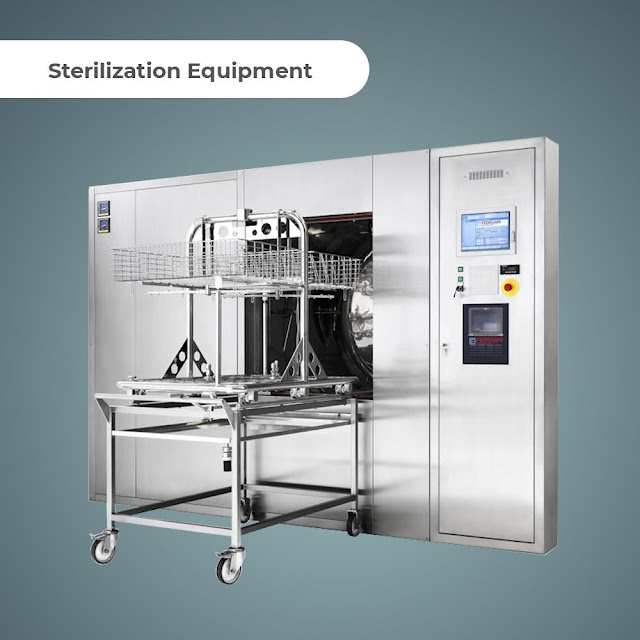Another type of sterilization equipment is a hot air oven, which is used to sterilize metal devices, needles, and petroleum products
The act of sterilising a surface, fluid, drug, or biological culture involves killing, eliminating, deactivating, or removing all forms of life and other biological agents. Chemicals, heat, radiation, filtration, high pressure, and other factors can all be used to sterilise anything. In laboratories, especially those that focus on microbiology and medicine, Sterilization Equipment is frequently employed. The autoclave is one of the most essential sterilisation tools since it can be used to sterilise medical equipment as well as laboratory supplies like glassware and micro centrifuge tubes. In an autoclave, you can also sterilise any chemicals, liquids, water, or food that you utilise for testing. Hot air ovens, which are used to sterilise metal devices, needles, and petroleum products, are another kind of sterilising equipment. Dry heat sterilising apparatus is also available.
When something is
sterilised, all microbiological life—including bacteria, viruses, fungus, and
spores—is completely eliminated or destroyed. Steam, dry heat, ethylene oxide
gas, and liquid chemosterilizers are all used to sterilize. infected item.
The majority of surgical
and medical Sterilization
Equipment used in healthcare institutions is
constructed from heat-resistant materials and is sterilised using heat,
primarily steam. However, since 1950, the number of medical tools and devices
composed of materials (such plastics) that need to be sterilised at low
temperatures has increased. Since the 1950s, ethylene oxide gas has been
utilised for medical equipment that is sensitive to heat and moisture. In the
past 15 years, several innovative, low-temperature sterilisation technologies
(such as ozone, peracetic acid immersion, hydrogen peroxide gas plasma, and
others) have been created and are being utilised to sterilize medical
devices.
A variety of
sterilisation techniques are used to clean medical equipment, including steam,
dry heat, radiation, ethylene oxide gas, evaporated hydrogen peroxide, and
other sterilisation techniques (for example, chlorine dioxide gas, vaporised
peracetic acid, and nitrogen dioxide). Manufacturers frequently utilise the
crucial sterilisation technique known as ethylene oxide Sterilization
Equipment to keep medical devices secure.




Comments
Post a Comment